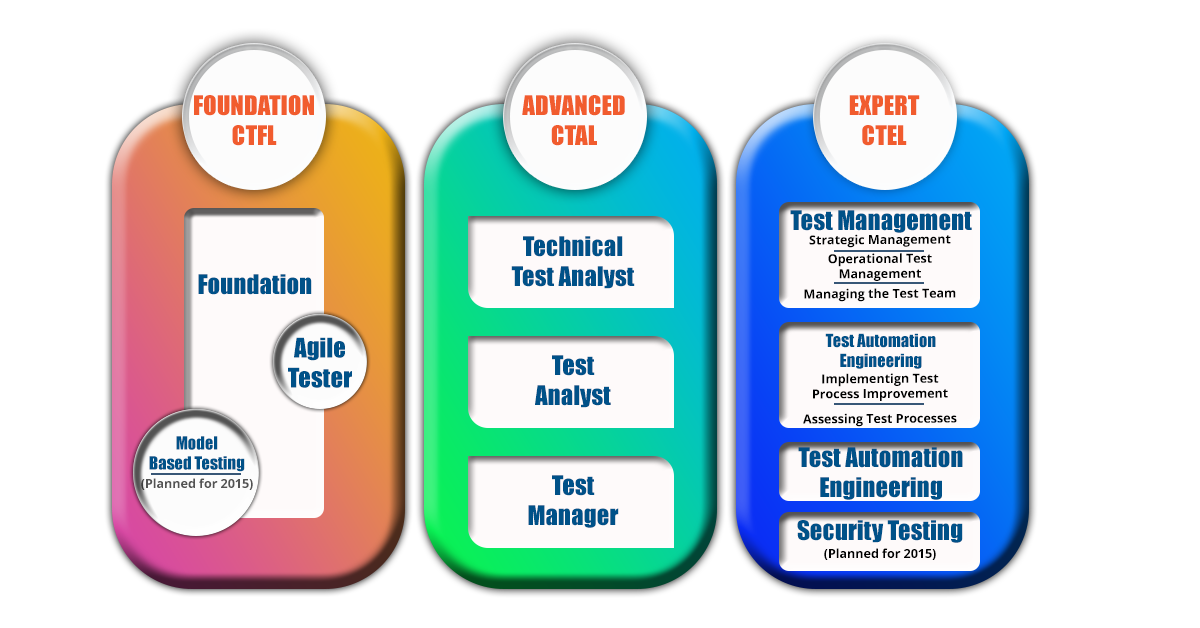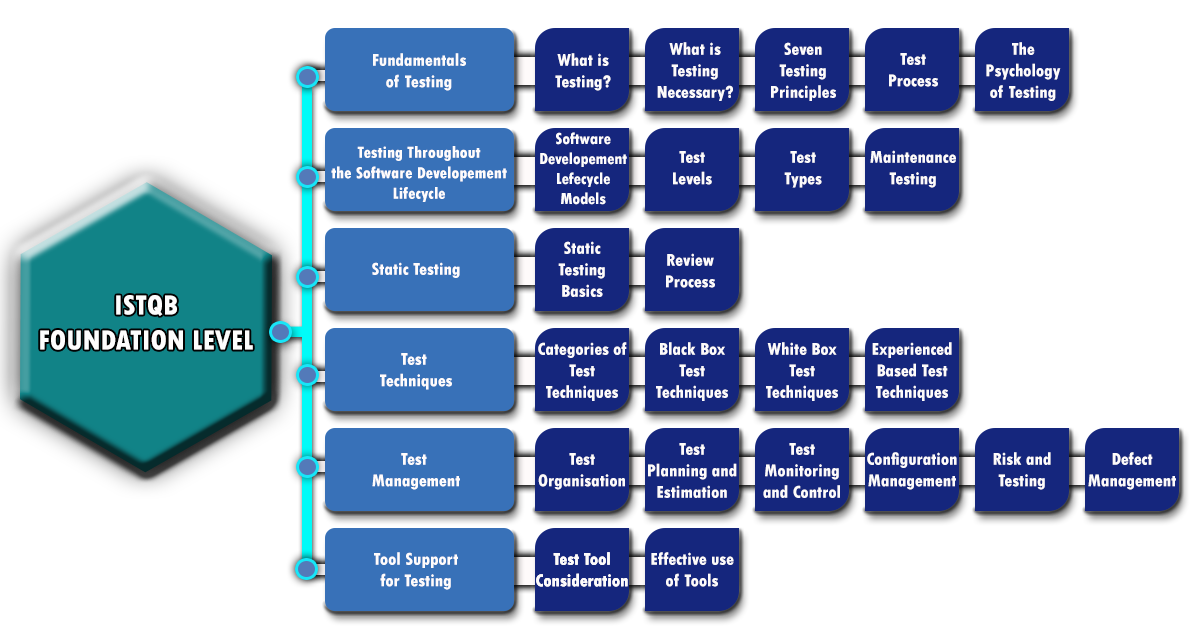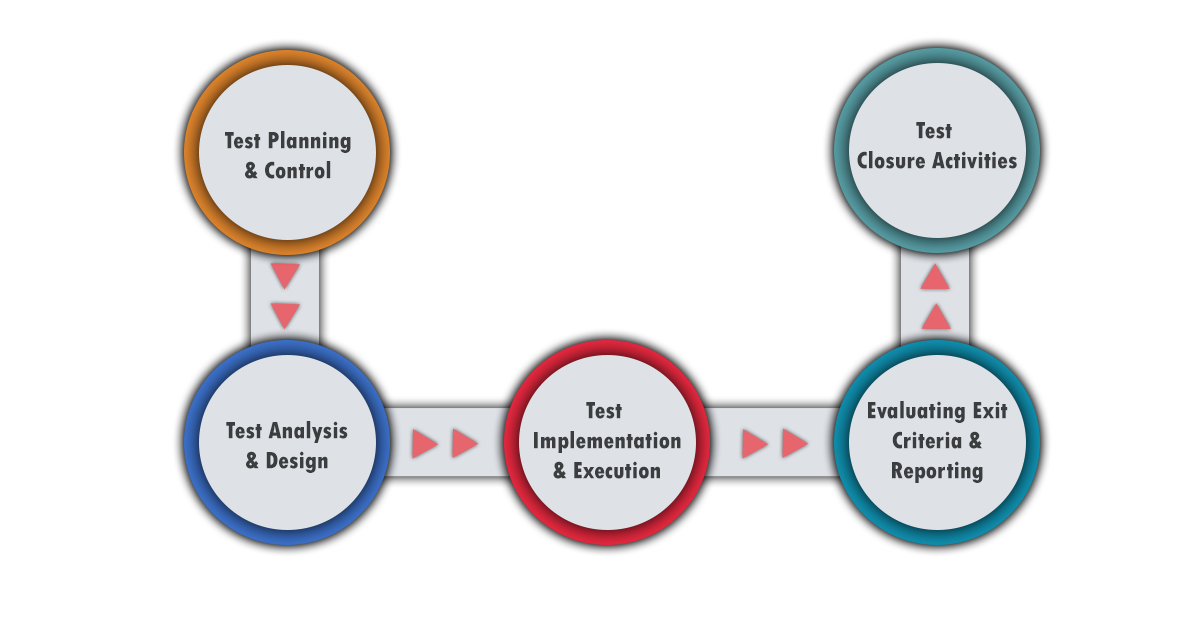Learning objectives
- The process of acquiring level of knowledge to understanding through learning objectives
- Identity, remember and recall the basic concepts.
- Presenting reasonable explanations with examples, comparing, classifying and summarizing the concepts.
- Applying the relevant technique to the correct context.
- Document analysis, Risk analysis and solution driven are the major requirements for the professionals.
What is ISTQB?
ISTQB (International Software Testing Qualifications Board) implemented to improve the value of testing. As an individual to a profession or an organization required to go through the process of testing to meet the software application standards and bug free output. Ao ISTQB enhances the efficiency work of software testers by certified knowledge.
It has three levels of syllabi:
- Foundation CTFL, which is the target of this course. There is a new extension in the foundation level called “Agile Tester”, for those who are testing software in an agile environment. It is not in this scope of this course. It is not required in this foundation CTFL level of exam.
- Advance CTAL is all about Test manager, Test Analyst and Technical Test Analyst.
- EXPERT CTEL is Test management, improving the testing process, Test Automation Engineering and Security Testing.

Introduction to ISTQB /CTFL Training: ISTQB key foundation level covers six discussion points:

Fundamentals of software Testing is the first concept to understand the overview on testing activities.
Interested in learning ISTQB? Join hkr and Learn more about ISTQB from the ISTQB Online Course!
What is Software Testing?
It is a process of looking over the software application, system or components to meet the software application specification. Through testing one should make sure to confirm and satisfy the business requirement.
Why is Testing Necessary?
May possibly execute with errors while developing applications, that leads to failure of the software applications. Most errors may be minor but some are quite dangerous that require constant evaluation and monitoring to make sure the efficiency in developing software application and to verify that no errors, bugs or defects are unidentified. So, Testing plays a major role in software development.
1.Seven Testing Principles: With our deviating, focus on the specification, understand the requirement and achieve the optimum test results while conducting software testing. To achieve that one needs to know common seven testing principles which are widely practiced in the software industry.
- Testing shows presence of defects
- Exhaustive testing is not possible
- Early testing
- Defect clustering
- Pesticide paradox
- Testing is context dependent
- Absence of errors fallacy
Fundamental Test Process: Test planning, designing test cases, execution and evaluating till the test closure is the basic test process.

Planning and Control
2) Analysis and Design
3) Implementation and Execution
4) Evaluating exit criteria and Reporting
5) Test Closure activities
Test Work Products: The scope of testing defines the objectives and goals are in the form of artifacts. These artifacts are the target base approach for deliverables of applications.

ISTQB Training
- Master Your Craft
- Lifetime LMS & Faculty Access
- 24/7 online expert support
- Real-world & Project Based Learning
Traceability between the Test Basis and Test Work Products: It determines to loop back to their base-line requirement. Tabular representation of data is a way to do traceability checks.
1.Through horizontal traceability from test requirement documentation to a given test level. Ex: System testing, test cases to test scripts.
2.Through vertical traceability are development documentation layers. Ex: Requirements to components.
The Psychology of Testing: Depends upon the developers and testers mindset, here the psychology plays an important role on the impact of the end results. It should be mutual understanding to work towards the common goal. Testing the applications in possible scenarios and ensuring the bug free software product. The three segment of the psychology of testing are:
1.The mindset of Developers and Testers.
2.Communication in a Constructive Manner.
3.Test Independence.
Testing throughout the Software Life Cycle: You will learn different modules of software testing levels and types.
Check out here for ISTQB interview questions and answers
Software Development Models - Waterfall, V-Model, Iterative Development, RAD: It defines the software development life cycle (SDLC) how it develops in various stages and maintains to reach the requirement. Brings the creative ideas and market requirements into functionality features of software products. SDLC is the method of process to develop applications. You will learn the various types of SDLC and their process based on software requirements.
What is Agile? Agile Software Development | Inception and History: Agile Software Development is a flexible method of SDLC. It will accept the changes at any stage of product development and ensure maintenance of quality.
Agile Manifesto: Set of values created by Agile Alliance in the form of a manifesto which constrains traditional methods of SDLC.
Interactions with developers, scrum master, testers and stakeholders over processes and tools
- over comprehensive documentation
- Client involvement over contract negotiation
- Accepting change over sticking to a plan.
Software Development Model - SCRUM: Scrum is a process of time- base iterative development cycles. Scrum is sort of an agile methodology of software development. Agile with Scrum is a framework to process the method.
Software Development Model – KANBAN: Kanban is another well known framework that supports the implement agile method. Communication and Transparency are key roles to process with a clearly visible on kanban board that allows every Individual to look at every stage of work at any time.
Test Levels - Unit Testing or Component Testing: In general software is collaboration of several components.This unit Testing, Component Testing, Program Testing or Module Testing that performs testing on each component individually without integrating any components. One of frequent black box testing types which processes the task.
Test Levels - Integration Testing: Unit components are integrated and tested as a group. Test stubs and test drivers are used as support to perform this testing. This test is performed to identify any sort of defects, when these separate modules are integrated together and still performing as per the requirements. It is also named as 'I & T' (Integration and Testing), 'String Testing' and sometimes 'Thread Testing'.
Test Levels - System Testing: Functional and Non-functional Testing are the two levels of software testing.
1.Functional Testing – What a system must execute
2.Non-functional Testing – How well it is meeting the client expectation within design and constraints.
Test Levels - Acceptance Testing: Success of System testing is not final. Most important of Acceptance tests that determine to meet the criteria as per the business requirement and acceptability of users.
Test Types - Maintenance Testing: After deployed in an operational environment, maintenance testing involves avoiding any sort of breakdown. Like implementation, further any changes made in software or hardware changes should not impact the operations of software application. So to maintain the quality across the performance of the product these testing will be conducted. It considers two ways.
1.Changes made in software should be thoroughly tested.
2. Any changes made in software do not affect the current functionality of the software, so regression testing is also conducted.
3.Static Test Techniques: We use this testing to identify the defects in software without execute, it doesn’t require seeing the dynamic functionality and to avoid any defect at early stage before running the software application. Reviews and analysis of reviews of products are core understanding of Static Test techniques. It support to identify the early defects to rectify, Reduce development timeline, Optimum utilization of time and cost, Improve the productivity by performing following steps:
- Ad hoc and Informal Reviews
- Checkpoint and Walkthroughs
- Scenarios and Technical Reviews
- Inspections and working process
- Static Analysis
- Data Flow
- Control Flow

Subscribe to our YouTube channel to get new updates..!
4.Test Design Techniques: Design techniques support to prepare the test cases to understand the test conditions that will help design testing. Design, analysis and implementation are steps for the test development process. Methods of test design techniques are useful for the functionality of software, that are categories into three ways based on Software Requirements Specification (SRS) and experience based techniques and choosing test techniques :
1.Black-box Techniques: Both EP and BVA techniques check the functionality of application by implementation of internal process of software. Mainly focus on input and output of the product. Based on SRS, these testing will cover the statement, decision and structure of the application.
- Equivalence Partitioning
- Boundary Value Analysis
2.Experience based Techniques: With experiences and natural instinct occur in mind to identity the defects. These Error Guessing and Exploratory testing are used
- Error Guessing
- Exploratory Testing
3. Choosing a Test Technique: Depending upon the software requirement, functionality of internal and external factors helps to choose appropriate test technique .
4. Test Management helps manage your testing efforts. For high-quality software, high end testing is required and manages to plan the test process through test cases. It helps to know the levels of test required, importance of independent testing , advantages and disadvantages, task based and required skill by testers.
5. Test Planning and Estimation - This tutorial we will learn about some of the factors which affect the planning and estimation of testing.
Timeline of development process – Test plan, content and purpose to meet the goal of the project.
Strategy and Resources estimation – Understand the need of design, objectives, documentation, process of test, team working structure and client handling strategy.
Test output or results – factors determine the entry and exit criteria.
Estimation approach through metrics and consultative techniques.
2.Test Progress Monitoring and Control: Assign tasks to the testers to monitor and control the activity through test control and by taking the test status reports.
3. Configuration Management: Software configuration management (SCM) tool is used to manage the concurrency, version control and synchronization of the testing the software application.
4. Risk and Testing: Organizational principle software testing like Risk-based testing (RBT) is used to consider the features and functions of software based on risk of failure. It analyzes the risk of testing the product, project and techniques..
5. Incident Management: Incidents and incident reports/Defect Life Cycle plays an important role in the testing. You will be learning the Bug life cycle and its different stages to close the defect.
6. Tool Support for Testing: Different tools are used for testing at this level.
Test Tools:
You will learn why and how the tools help different classification the software testing. Also how tool manages and supports the static testing and test specification tools. Below are given the various levels of testing tools supports at stage wise
1.Logging and test execution
2.Performance and monitoring
3.Specific application areas
4.Tool support using other tools
Optimum of tools: Risk and Potential Benefits of tools will explain. Also special utilization of execution, performance, static analysis and test management testing the software.
Conclusions: Now, that you have an idea about the basic outlines of the contents covered in the ISTQB CTFL Foundation certificate course training and next steps. Hope the information in the tutorial is helpful. Assuming that it has given a basic idea, I would like to inform you that learning and understanding ISTQB will be a plus for your career enhancement. For any queries/questions related to the topic, we are here to help you resolve them.
Other related articles:
About Author
As a senior technical content writer for HRK tainings, srivalli patchava has a greater understanding of today's data-driven environment, which includes key aspects of data management and IT organizations. She manages the task of creating great content in the areas of software testing, DevOps, Robotic process automation. Connects with her on Linkedin and Twitter.
Upcoming ISTQB Training Online classes
| Batch starts on 14th Dec 2025 |
|
||
| Batch starts on 18th Dec 2025 |
|
||
| Batch starts on 22nd Dec 2025 |
|

